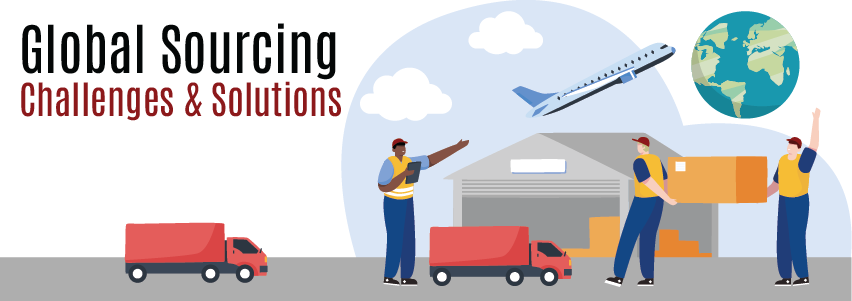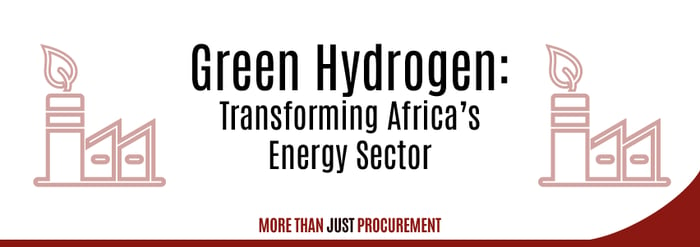Global Sourcing - Challenges and Solutions
Tips & Tricks • 3 min read • Jan 25, 2023 4:23:40 PM • Written by: Amelia Inskipp

Supplying products from global manufacturers have many advantages, which is why so many businesses venture overseas to gain the benefits global sourcing provides. However, several challenges come with global sourcing, and often many are complex.
What is Global Sourcing?
Global sourcing is the process of locating goods or services from the international market, that are locally unavailable. This can range from obtaining raw materials, outsourcing services such as logistics or production, or finding new suppliers. Companies use global sourcing as a way to use different countries' resources to create a competitive advantage.
Many different factors can affect the benefits that sourcing internationally holds. Some of these include political, legal, and cultural differences, as well as trade regulations, transportation, and technological difficulties.
In this week’s blog post, we research the challenges that many companies face when looking afar for their products and how to overcome these.
Communication Barriers
For many businesses who look to source from around the world, communication is the biggest obstacle when dealing with international suppliers. With difficulties such as time differences, language barriers and differing national holidays, it can take a long-time to rectify the smallest of problems, which local suppliers may be able to do quicker. These problems can then delay communications further, bringing the whole supply chain to a halt. Communicating and getting approval can be far easier the closer in distance you are, as with some time zones, working hours may not even overlap.
A solution that Storm Procurement adopt is having an in-country representative to ensure quicker communication is upheld. This not only allows for swift contact between agent and supplier but also allows your business to maintain more control over crucial details such as prices and brand image.
Quality Control
When using an in-house manufacturing facility, there is more control over the production cycle than when production is overseas. This is an important factor when considering quality, failure from an international source is much more severe than if it was from a domestic one. Much like the communication barriers, it can take several months to then resolve any issues. Poor quality products can mean an increase in reverse supply change costs, affecting the bottom line and disrupting the supply chain.
One way to prevent these issues from occurring is to implement quality inspections before the product leaves the country, through independent quality regulators. However, some companies may not want to pay for third-party companies to ensure high quality. Therefore, other solutions include optimising the use of international standardisation. This is defined as the universal model that indicates specific requests for a quality management system. This is used to demonstrate the capability to reliably provide products and services that meet customer and regulatory requirements. Another solution is using both global and domestic suppliers which provides the opportunity for businesses to resolve issues in a shorter turnaround.
Monetary Issues
Cost savings is one of the biggest advantages when sourcing worldwide. Companies can take advantage of the different economies and therefore access cheaper material and labour expenses, reducing the overall production cost.
However, dealing with different economies also means dealing with the fluctuation of exchange rates. With the rate that the currencies keep fluctuating, the profit on a sale at the beginning of the deal can completely differ to when the transaction has been paid, usually leading to substantial losses. Ensuring that there is leeway when negotiating the cost of a sale can allow a safety net for profit if currencies were to fluctuate. This may be including currency adjustments in contracts, or using a neutral currency which is less likely to fluctuate.
However, monetary issues are not just involving exchange rates in global sourcing. Many different aspects of sourcing transnationally can impact costs. These can include, rising shipping costs and the costs of delays or loss of goods when transporting. Setting fixed costs for goods or services can allow for no extra capital to be paid out if any issues were to arise.
Logistical Matters
Products being shipped to different locations thousands of miles apart is a complex procedure. The supply chain can be affected by the tiniest of issues throughout the whole process, but logistics is an important factor in the efficiency of a supply chain.
Some of the disruptions that can surface include, loss of goods or damage in transit, transit supply shortages, un/loading incidents, and even a natural disaster. Although preparing for natural disasters is pretty impossible, ensuring that there are meticulous arrangements in place to ensure any crises are prepared for can allow for a reduction in concerns.
With buyers now increasingly expecting faster delivery times, global supply chains can often make it challenging to meet these demands. By effectively planning, other measures can be put in place to reduce costs and meet customer demands. This could be using air freight for those time-critical customers, but road or sea to those clients who aren’t as time conscious. Storm Procurement also have global warehouses scattered in prime locations to benefit our customers who need to meet deadlines.
Reach the World. Giving Made Easy with Impact.
Amelia Inskipp
Related Articles

Business News
What Impacts Oil Prices

Tips & Tricks
Sustainability- Recycling Tyres

Business News
Green Hydrogen: Transforming Africa’s Energy Sector
Don't Miss Out On A Thing
Sign up and Join Our Newsletter Today